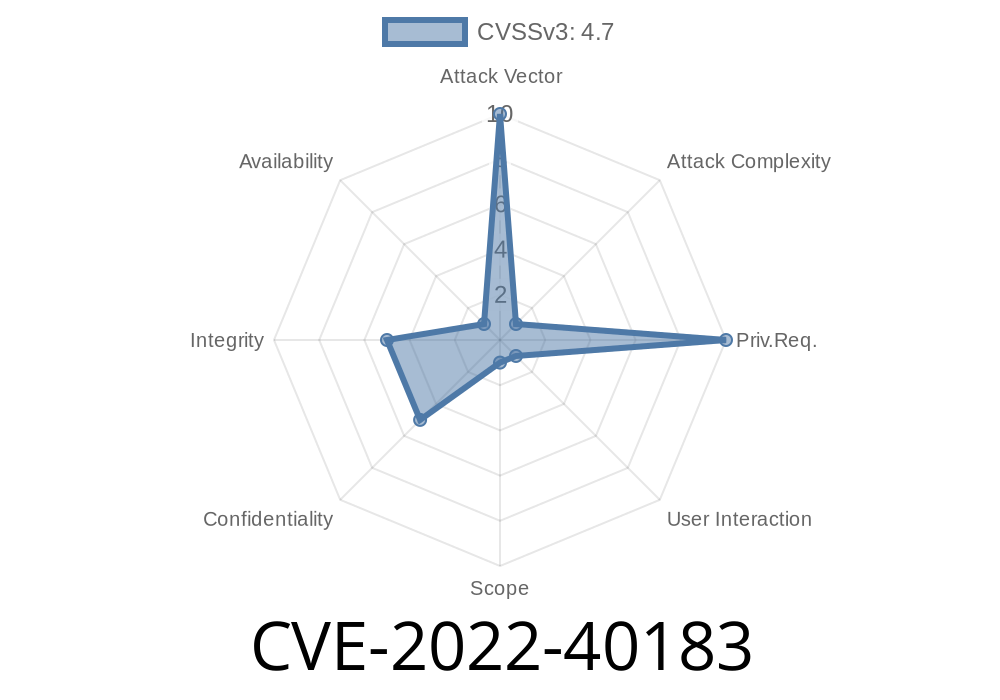---
Security experts have discovered a vulnerability, registered as CVE-2022-40183, affecting the VIDEOJET multi 400, a popular video encoding system. This vulnerability is a Reflected Cross-Site Scripting (XSS) flaw that occurs due to an error in the URL handler. The XSS vulnerability has the potential to allow a malicious actor to execute JavaScript code within the context of the user's web browser when interacting with the video encoder's web-based interface. This blog post will discuss the details of the vulnerability, provide code snippets to demonstrate the exploit, and provide links to original references for further information.
Exploit Details
---
To begin understanding the vulnerability, we must first understand the basics of a reflected XSS attack. In a typical reflected XSS scenario, a victim clicks on a compromised link containing a payload (malicious JavaScript code). This payload is then executed by the victim's browser, potentially allowing the attacker to steal sensitive information or perform actions on the victim's behalf.
In the case of CVE-2022-40183, the vulnerability resides within the URL handler of the VIDEOJET multi 400. An attacker can craft a malicious link containing JavaScript code tailored to target the particular encoder system. When a user clicks on the link, the JavaScript code is executed in the context of the user's session, potentially allowing the attacker to gain unauthorized access or perform unauthorized actions.
Code Snippet
---
Let us consider an example of exploiting the vulnerability. Let's assume the victim's VIDEOJET multi 400 web-based interface is accessible at the following address:
http://192.168.1.5/
In this example, the attacker crafts a link that incorporates malicious JavaScript code, like this
http://192.168.1.5/?search=<script>alert('XSS')</script>
When a victim visits the crafted link, the JavaScript code is executed in the victim's browser.
Mitigation
---
To protect against this vulnerability, it is essential to follow secure coding practices while handling user inputs. One of the best methods to prevent XSS attacks is to sanitize and validate user input and implement proper output encoding for all data displayed on the web-based interface. Additionally, regularly updating the VIDEOJET multi 400's firmware, as well as applying security patches promptly, will minimize the potential for exploitation.
Original References
---
For more information about this vulnerability, you can refer to the following resources
1. CVE-2022-40183 - National Vulnerability Database (NVD)
2. OWASP - Cross-Site Scripting (XSS)
3. VIDEOJET Systems - Security Advisory for CVE-2022-40183 (PDF)
Conclusion
---
CVE-2022-40183 is a reflected XSS vulnerability that can lead to unauthorized access and actions being performed by an attacker in the context of a user's session when interacting with the VIDEOJET multi 400 web-based interface. By following secure coding best practices, ensuring timely security updates, and keeping abreast of new vulnerabilities, one can help prevent such attacks from succeeding.
Timeline
Published on: 10/27/2022 17:15:00 UTC
Last modified on: 10/31/2022 13:48:00 UTC
